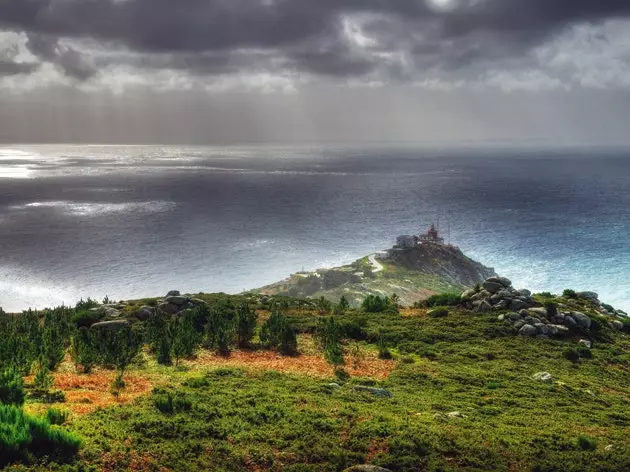
Fisterra: death, sunset, end of the world and rebirth
FISTERRA
One of those places blessed with an evocative name capable of inspiring even the dullest and most orthodox spirits . Finisterre, the end of the world in Latin, the end of the primitive Camino de Santiago , was for a few millennia the non plus ultra of the Western world. When visiting this point, in addition to avoiding the pilgrims who they burn their boots in a ritual as telluric and symbolic as it is polluting , we must not forget to visit the nearby ruins of the Hermitage of San Guillermo , one of those powerful places that are on the brink of oblivion.
Among its remains, we must look for a broken stone in the form of a sarcophagus that apparently had among its powers that the sterile couples that lay in it were capable of engendering. We already know: death, sunset, end of the world and rebirth . There are places that have to be magical by pure logic.
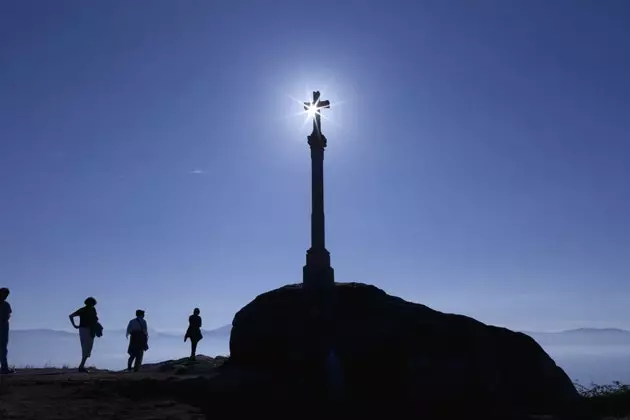
The end of the world that is not
CAVE OF THE KING CINTOLO
The caves, with their connotations to penetrate the interior of the earth, to return to the maternal womb and to enter another plane of knowledge they are perfect places for legends plagued with symbology.
The largest cave in Galicia, located in the vicinity of Mondonedo , also has her story of a princess with forbidden love buried along with her entire civilization in the underworld waiting for someone to rescue her. Volunteers for this mission can visit the Rei Cintolo cave with a guide after booking in advance; a very atmospheric gate protects the entrance to its more than seven kilometers of route between stalactites, rivers and intricate galleries.
ARMENTEIRA MONASTERY
A visit to this beautiful Romanesque monastery is the perfect opportunity to recount the legend of the abbot who founded it along with four Cistercian monks. Ero (later Saint Ero) used to go out to pray for the mount castrove , close to the monastery, and on one of his walks he became absorbed in contemplation of a little bird that sang on a nearby branch. When he came out of his reverie, he found it very difficult to find his way to the monastery and upon reaching the building he found it transformed. Furthermore, he did not know any of the friars, and they had never seen him. Confusion and horror until one of the new monks found in the archives a reference to Ero, founder of the monastery, disappeared without a trace 300 years ago (a bit like in The Navigator's Flight ) . Discovering that what for him had been a moment of reveling in the song of the bird was actually three centuries, Saint Ero fell dead and his tomb has still not been found today.
A separate legend (although it has the prestige of having already been narrated by King Alfonso X in his Songs to Santa Maria ), the monastery is the most refined example of Romanesque in Galicia and a perfect example of medieval monastic life.
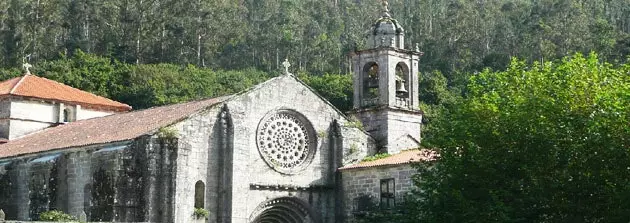
Armenteira Monastery
PENAS DAS RODAS
Within the world of stone worship, one of the most striking structures in Galicia has survived to this day without Christianizing , in a state similar to that of its original purposes without any chapel or crucifix giving it the letter of Christian approval.
It is the formation of two large granite balls known as "penas das rodas" in the town hall of King's Outeiro . A prehistoric place of worship, a solar calendar, an astronomical observatory... there are many theories about this place that impresses by the size and balance of the rocks . The perfect time to visit is during the summer solstice, when the sun sets just between the two stones and the reminiscences of a Celtic altar become stronger.
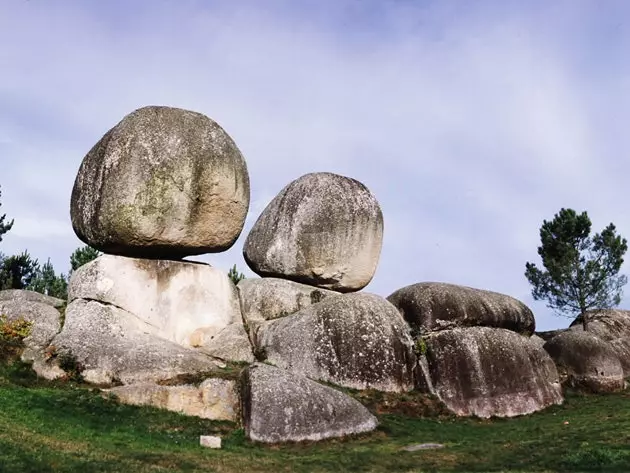
Penalties of Rhodes
SANTA MARIA DO CEBREIRO
The first church encountered by pilgrims on the French Way of Saint James upon entering Galicia is a pre-Romanesque construction to which the legend of the Galician Holy Grail is linked. In the fourteenth century, a skeptical priest before the Eucharistic miracle that transforms the bread and wine into the flesh and blood of Christ, expressed his doubts aloud, at which point the host actually shrank and turned into meat and the wine into blood. . AND The chalice and the paten in which the miracle took place are preserved inside , just like the carving of the virgin who, according to legend, bowed her head to contemplate transubstantiation.
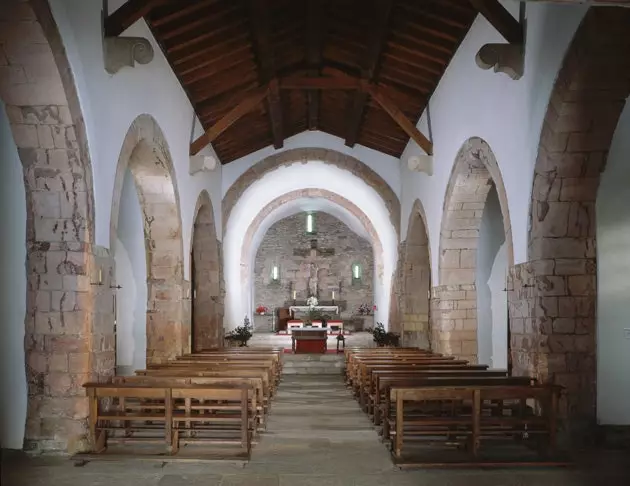
Santa Maria do Cebreiro
TUNNELS OF MONTE DA PENEDA
More than the simple hermitage on its summit, more than the stupendous views of the Vigo estuary that can be seen from here, what is truly striking in this mountain are the rock-cut tunnels whose purpose is still unknown.
Although in the first meters it is possible to descend and advance through them, immediately the passage becomes impracticable and it is necessary to elucubrate about its function: a mine from Roman times, a tunnel that communicates directly with the nearby castle of Soutomaior or even an intricate labyrinth of the Moors to hide their treasures...
TO RELEASED
Perhaps many of the bathers who enjoy the magnificent beach of A Lanzada ignore that they are in one of the enclaves full of meaning in Galicia . Where a hermitage stands today, pre-Roman, Roman and medieval constructions were erected in the past, of which the most striking examples today are the remains of a fort, a necropolis and a defense tower.
More persistent yet intangible is the fertility ritual that dictates that women wishing to conceive must bathe at midnight on the beach and receive nine consecutive waves (one for each month of pregnancy). There are still women who do it every summer, as a sign of one of those traditions capable of surviving all kinds of civilizations and beliefs.
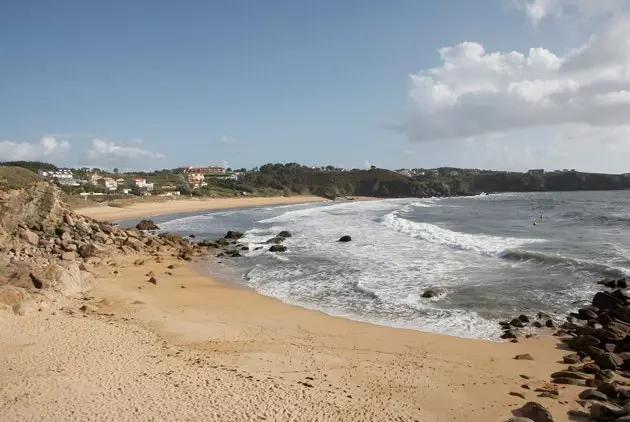
To Launched
DOLMEN OF DOMBATE
Much of the Galician heritage is not identified, classified or restored as it should be, which keeps numerous monuments in a semi-abandoned state which harms its conservation but is very much liked, due to its evocative nature, by scholars of the occult. This is not the case of the Dombate dolmen, which has been object of intense museumization and it is currently surrounded by a structure of wood and glass that protects it, not without controversy, without detracting from its charm. Today you can see the engravings and paintings that earned this burial mound the name of “neolithic cathedral”.
RUINS OF SANTA MARIÑA DOZO
Galicia is full of ruins, crumbling stones and churches in decline , but few are as evocative and poetic, capable of making a romantic comme il faut salivate, as those of Santa Maria Dozo, in Cambados. After prolonged deterioration, the building, no longer worshiped since the 19th century, shows its gothic arches to the sky, ivy grows in the chapels and the tombs of the nobles who once had the privilege of being buried inside the church are today as unprotected as those in the adjacent cemetery.
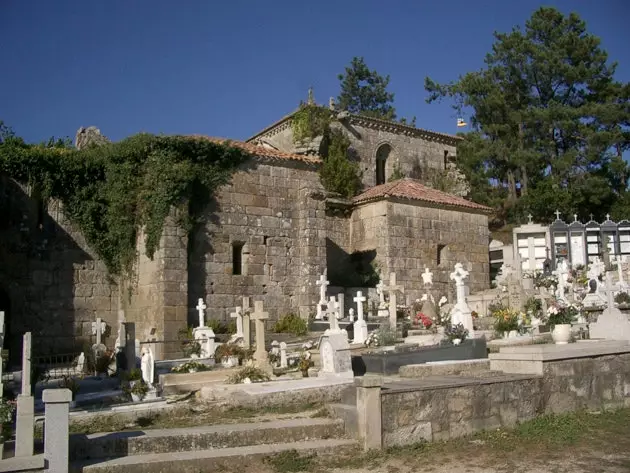
Santa Maria Dozo
WITCHES IN COIRO
In a land where healers and fixers were more common than the official doctors, could not miss an episode of witchcraft. The real case of a process of the Inquisition in the 17th century a woman from the parish of Cangas, María Soliña (real character but already mythical in the Galician imaginary), tortured until she confessed to being a witch and all her assets were confiscated, she mixes with the legends that lived until recent times of witch covens on the beach of Coiro, where they went after the call of the church bell that she rang alone. As in all stories of witchcraft, collective paranoia, obscurantism and ancestral knowledge appear transmitted in parallel to the official courses.
*** You may also be interested in...**
- Ten places of the Magical Galicia
- You know you are Galician when...
- The most beautiful villages in Galicia
- Galifornia: reasonable resemblances between the two west coasts
- Squares where to procrastinate in Galicia
- Five things to eat in Galicia (and they are not seafood)
- Everything you need to know about Galicia
- All the articles of Raquel Piñeiro
